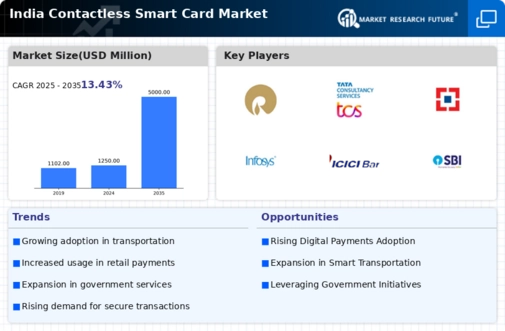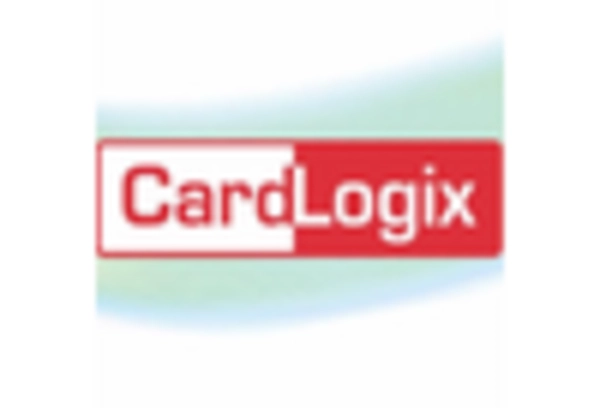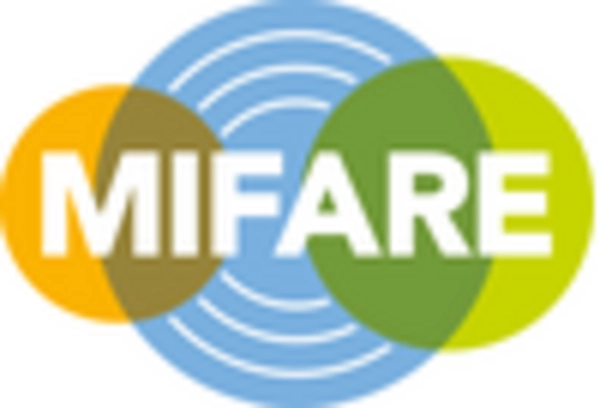Government Initiatives and Regulations
Government initiatives aimed at promoting digital payments are significantly influencing the contactless smart-card market. The Indian government has implemented various policies to encourage cashless transactions, including incentives for merchants to adopt digital payment solutions. The introduction of the Digital India campaign has further accelerated the transition towards contactless payments. As a result, the contactless smart-card market is witnessing increased investment and development in infrastructure to support these initiatives. The government's push for a cashless economy is expected to drive the growth of contactless smart cards, as more consumers and businesses embrace this technology to comply with regulatory standards and benefit from the associated conveniences.
Growing Demand for Contactless Payments
The increasing demand for contactless payments in India is a primary driver for the contactless smart-card market. As consumers seek faster and more convenient payment methods, the adoption of contactless cards has surged. According to recent data, the volume of contactless transactions in India has risen by over 200% in the past year alone. This trend is fueled by the proliferation of point-of-sale terminals that support contactless technology, making it easier for consumers to make quick purchases. The contactless smart-card market is likely to benefit from this shift, as more retailers and service providers integrate contactless payment options into their systems, enhancing customer experience and driving further adoption.
Expansion of E-Commerce and Online Services
The expansion of e-commerce and online services in India is driving the demand for contactless smart cards. As more consumers engage in online shopping, the need for secure and efficient payment methods becomes paramount. Contactless smart cards offer a convenient solution for online transactions, allowing users to make quick payments without the need for physical cash. The contactless smart-card market is experiencing growth as e-commerce platforms increasingly accept contactless payments, catering to the preferences of tech-savvy consumers. This trend is likely to continue, as the e-commerce sector in India is projected to reach $200 billion by 2026, further propelling the demand for contactless payment solutions.
Technological Advancements in Card Security
Technological advancements in card security are playing a crucial role in the growth of the contactless smart-card market. Innovations such as EMV (Europay, MasterCard, and Visa) chip technology and encryption methods enhance the security of contactless transactions, addressing consumer concerns about fraud. As security features improve, more consumers are likely to adopt contactless smart cards, leading to increased market penetration. The contactless smart-card market is expected to see a rise in demand as financial institutions and service providers prioritize secure payment solutions. This focus on security not only protects consumers but also fosters trust in contactless payment systems, further driving market growth.
Rising Smartphone Penetration and Mobile Wallets
The rapid rise in smartphone penetration in India is significantly impacting the contactless smart-card market. With over 700 million smartphone users, many are turning to mobile wallets that utilize contactless technology for payments. This trend is encouraging the integration of contactless smart cards with mobile payment solutions, creating a seamless payment experience for users. The contactless smart-card market is likely to benefit from this convergence, as consumers increasingly prefer the convenience of using their smartphones for transactions. As mobile wallet adoption continues to grow, the demand for contactless smart cards is expected to rise, further enhancing the overall market landscape.
















Leave a Comment